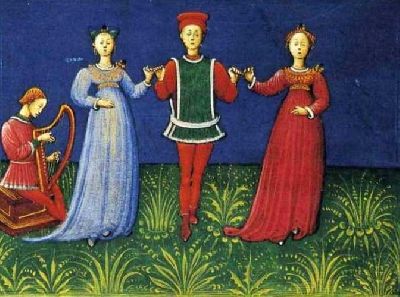Guglielmo Ebreo on:
[Wikipedia]
[Google]
[Amazon]
 Guglielmo Ebreo da Pesaro (c. 1420 – c. 1484) was a Jewish Italian dancer and dancing master at some of the most influential courts in
Guglielmo Ebreo da Pesaro (c. 1420 – c. 1484) was a Jewish Italian dancer and dancing master at some of the most influential courts in
 Guglielmo Ebreo da Pesaro (c. 1420 – c. 1484) was a Jewish Italian dancer and dancing master at some of the most influential courts in
Guglielmo Ebreo da Pesaro (c. 1420 – c. 1484) was a Jewish Italian dancer and dancing master at some of the most influential courts in Renaissance Italy
The Italian Renaissance ( it, Rinascimento ) was a period in Italian history covering the 15th and 16th centuries. The period is known for the initial development of the broader Renaissance culture that spread across Europe and marked the trans ...
, including Naples, Urbino
Urbino ( ; ; Romagnol: ''Urbìn'') is a walled city in the Marche region of Italy, south-west of Pesaro, a World Heritage Site notable for a remarkable historical legacy of independent Renaissance culture, especially under the patronage of F ...
, Milan, and Ferrara. His byname '' Ebreo'' means simply ‘Hebrew
Hebrew (; ; ) is a Northwest Semitic language of the Afroasiatic language family. Historically, it is one of the spoken languages of the Israelites and their longest-surviving descendants, the Jews and Samaritans. It was largely preserved ...
.’ Not always used when referring to him, ''da Pesaro'' indicates that he was from the east-central town of Pesaro. Between October 1463 and May 1465, Guglielmo probably converted from Judaism to Roman Catholicism and took the name Giovanni Ambrosio.
He studied with Domenico da Piacenza
Domenico da Piacenza (c. 1400 – c. 1470), also known as Domenico da Ferrara, was an Italian Renaissance dancing master. He became a very popular teacher with his students – most notably Antonio Cornazzano and Guglielmo Ebreo da Pesaro – who ...
(sometimes known as Domenico da Ferrara) in the 1440s, and is mentioned in Domenico's ''Liber ballorum'' (1460).
Around 1463, Guglielmo authored the treatise ''De pratica seu arte tripudii'' (''On the Practice or Art of Dancing''), sometimes cited as ''Trattato dell' arte del ballare'' (''Treatise on the Art of Dancing''). In it, Guglielmo defends dancing as a noble art, emphasizing the important role of music. He also describes qualities necessary for dancers, including posture, musicality, style, and memory, and provides first-hand accounts of massive court celebrations in which he played a role. The treatise contains choreographies and music for thirty-six dances by Guglielmo and his contemporaries.
Conversion to Roman Catholicism
His patron and friend Alessandro Sforza (Lord of Pesaro and brother ofFrancesco Sforza
Francesco I Sforza (; 23 July 1401 – 8 March 1466) was an Italian condottiero who founded the Sforza dynasty in the duchy of Milan, ruling as its (fourth) duke from 1450 until his death. In the 1420s, he participated in the War of L'A ...
) convinced Guglielmo to convert to Roman Catholicism. Alessandro Sforza was a very religious man, but perhaps also influenced Guglielmo ability to access the dignity of Knight (as happened, getting the Golden Spur, as his teacher Domenico da Piacenza
Domenico da Piacenza (c. 1400 – c. 1470), also known as Domenico da Ferrara, was an Italian Renaissance dancing master. He became a very popular teacher with his students – most notably Antonio Cornazzano and Guglielmo Ebreo da Pesaro – who ...
). Between 1463 and 1465 he was baptized and took the name of Giovanni Ambrogio.
In honor of Alessandro Sforza's daughter, Ginevra, Guglielmo composed a '' bassadanza in due''. In 1465 he moved to Milan
Milan ( , , Lombard: ; it, Milano ) is a city in northern Italy, capital of Lombardy, and the second-most populous city proper in Italy after Rome. The city proper has a population of about 1.4 million, while its metropolitan city h ...
, where he was in charge of the celebrations for the wedding of Eleonora d'Aragona with the Duke of Bari.
See also
*Italian folk dance
Italian folk dance has been an integral part of Italian culture for centuries. Dance has been a continuous thread in Italian life from Dante through the Renaissance, the advent of the '' tarantella'' in Southern Italy, and the modern revivals of ...
References
External links
* {{DEFAULTSORT:Ebreo da Pesaro, Guglielmo Converts to Roman Catholicism from Judaism Renaissance dance 15th-century Italian Jews Italian male dancers Italian Roman Catholics Year of birth uncertain 1480s deaths 15th-century dancers